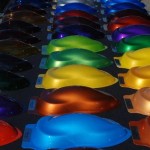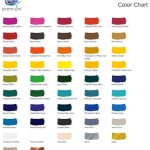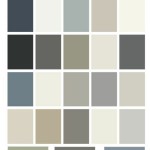White Paint Colors For Rooms With Lots Of Natural Light
Selecting the ideal white paint color for a room flooded with natural light requires careful consideration. The abundance of light can drastically alter the perceived hue, intensity, and undertones of white paints, making the selection process more nuanced than choosing a white for a dimly lit space. This article provides an in-depth analysis of factors to consider when selecting white paint, exploring various shades and their specific properties, and offering practical advice to ensure a successful and aesthetically pleasing outcome.
The impact of natural light on color perception is arguably the most crucial element to understand. Sunlight, particularly direct sunlight, contains a full spectrum of colors. This means that when light bounces off a white surface, it reveals subtle undertones that may otherwise remain hidden under artificial light. Furthermore, the direction of the light source – whether it’s coming from the north, south, east, or west – influences the perceived temperature of the white. For example, northern light tends to be cooler and bluer, while southern light is warmer and more yellowish.
Understanding these nuances allows for a strategic approach to white paint selection. For example, a room facing north might benefit from a warmer white to counteract the cool, bluish light, while a room facing south might require a cooler white to balance the warm, yellowish light. Ignoring these considerations can lead to undesirable results, such as a white appearing too stark or too dingy in a well-lit space.
Understanding Undertones in White Paint
All white paints possess undertones, which are subtle hints of color that influence the overall appearance. These undertones can range from warm hues like yellow, beige, and pink, to cool hues like blue, green, and gray. Identifying and understanding these undertones is critical, especially in rooms with ample natural light, as they become more pronounced and impactful. A white with a yellow undertone, for instance, can appear creamy and inviting in a south-facing room, while a white with a blue undertone can create a crisp, clean look in a north-facing room.
The undertone of a white paint can interact with existing elements in the room, such as flooring, furniture, and artwork. A mismatch between the white paint’s undertone and the existing décor can create a jarring or unbalanced visual effect. Therefore, it is essential to carefully assess the room’s existing color palette before selecting a white paint. Consider bringing paint swatches into the room and observing them under different lighting conditions throughout the day to gain a better understanding of how the undertones will manifest.
Common warm white undertones include yellow, cream, beige, peach, and pink. These undertones typically create a cozy, inviting atmosphere, and work well in rooms that lack natural warmth or have cooler lighting. Conversely, common cool white undertones include blue, green, gray, and violet. These undertones often create a more modern, clean, and airy feel, and are well-suited for rooms that receive an abundance of warm sunlight or have a contemporary aesthetic. Neutral whites are also available and boast a more balanced hue without any discernible undertones.
It's important to note that undertones are often more noticeable when the white is placed next to another color. For instance, a white with a slight yellow undertone will appear more yellow when placed next to a pure white. This "comparison effect" can be used to your advantage when selecting a white paint, by comparing different swatches against each other to reveal their subtle nuances.
Popular White Paint Colors for Naturally Lit Rooms
Several white paint colors are consistently recommended for rooms with abundant natural light, each offering a unique combination of brightness, neutrality, and subtle undertones. Some popular options include Benjamin Moore's White Dove, Sherwin-Williams' Alabaster, and Farrow & Ball's Wimborne White. Each of these whites offers a different take on the base hue.
Benjamin Moore's White Dove (OC-17) is a widely favored choice, known for its soft, warm, and slightly creamy undertones. It is a versatile white that works well in various lighting conditions and complements a wide range of décor styles. White Dove provides a sense of understated elegance and can create a welcoming and comfortable atmosphere in any room. Its warmth prevents it from feeling too sterile or stark, even in brightly lit spaces.
Sherwin-Williams' Alabaster (SW 7008) is another popular choice, often praised for its neutrality and subtle warmth. Alabaster is a creamy off-white that creates a soft, inviting ambiance. It's a good option for those seeking a white that isn't too stark or cool, and it works well in rooms with both natural and artificial light. It can create a calming, serene environment.
Farrow & Ball's Wimborne White (No. 239) is a classic off-white with a touch of warmth, creating a soft and inviting ambiance. It's known for its subtle complexity and depth of color, adding a touch of sophistication to any space. This shade is particularly effective in historic homes, where its nuanced color complements traditional architectural details.
Other notable mentions include Benjamin Moore's Simply White (OC-117), a brighter, cleaner white that works well in modern spaces, and Sherwin-Williams' Pure White (SW 7005), a crisp, bright white that reflects light beautifully. The choice ultimately depends on the room's specific lighting conditions, existing décor, and desired aesthetic.
Practical Considerations for Choosing White Paint
Beyond undertones and specific paint colors, several practical considerations should inform the decision-making process. These include the paint's sheen, the room's function, and the surrounding environment. The sheen, or paint finish, influences the paint's reflectivity, durability, and overall appearance. Different rooms and designs call for varying sheens.
Flat or matte finishes offer the least reflectivity, creating a soft, non-reflective surface that minimizes imperfections. These finishes are best suited for low-traffic areas, such as bedrooms or formal living rooms, as they are more susceptible to scratches and stains. Eggshell finishes offer a slightly higher sheen level, providing improved durability and stain resistance while still maintaining a soft, subtle appearance. Eggshell is an excellent choice for living rooms, dining rooms, and hallways.
Satin finishes offer even greater durability and stain resistance, making them suitable for kitchens, bathrooms, and children's rooms. Satin finishes have a slight sheen that is easy to clean and can withstand moderate wear and tear. Semi-gloss finishes provide a higher level of sheen and durability, making them ideal for trim, doors, and windows. Semi-gloss finishes are also moisture-resistant, making them a good choice for bathrooms and kitchens.
High-gloss finishes offer the highest level of sheen and durability, creating a reflective, almost mirror-like surface. High-gloss finishes are typically used on trim, doors, and cabinets, and are easy to clean and maintain. The room's function should also influence the choice of white paint. For example, a bedroom might benefit from a warmer, more inviting white, while a kitchen might require a brighter, more functional white. The surrounding environment, including landscaping and outdoor colors, can also affect the perceived color of the white paint. Consider how the outdoor colors will reflect into the room and influence the overall aesthetic.
Ultimately, the selection of white paint for a room with lots of natural light is a multifaceted process that requires careful consideration of various factors. By understanding the impact of natural light on color perception, identifying undertones in white paints, exploring popular white paint colors, and considering practical considerations, it is possible to achieve a beautiful and harmonious result that enhances the room's overall aesthetic.

The Best Paint Colors For Rooms With Lots Of Natural Light Complete Guide Paintzen

7 Paint Colors For Rooms With Lots Of Natural Light

The Best White And Pastel Colors For Every Kind Of Natural Light

The Best Paint Colors For Rooms With Lots Of Natural Light Complete Guide Paintzen

The Best White And Pastel Colors For Every Kind Of Natural Light

The Best White And Pastel Colors For Every Kind Of Natural Light

7 Paint Colors For Rooms With Lots Of Natural Light

The Best Paint Colors For Rooms With Lots Of Natural Light Complete Guide Paintzen

The Best Paint Colors For Rooms With Lots Of Natural Light Complete Guide Paintzen

7 Paint Colors For Rooms With Lots Of Natural Light
Related Posts








